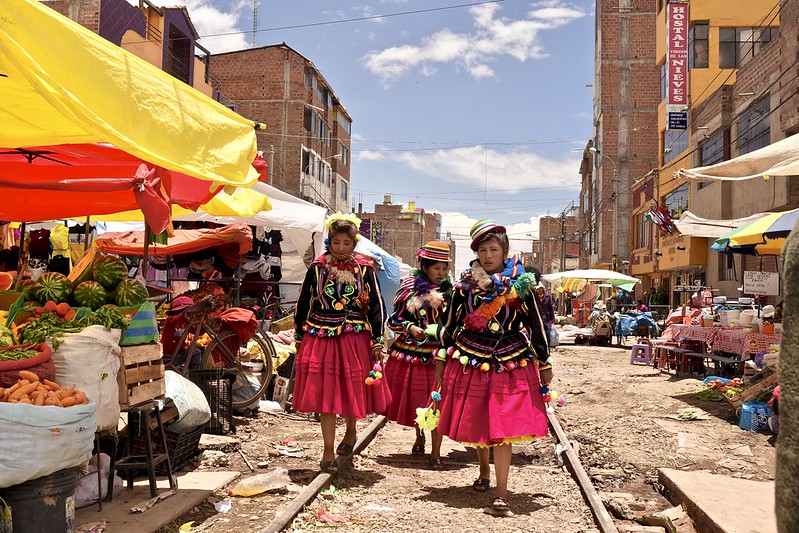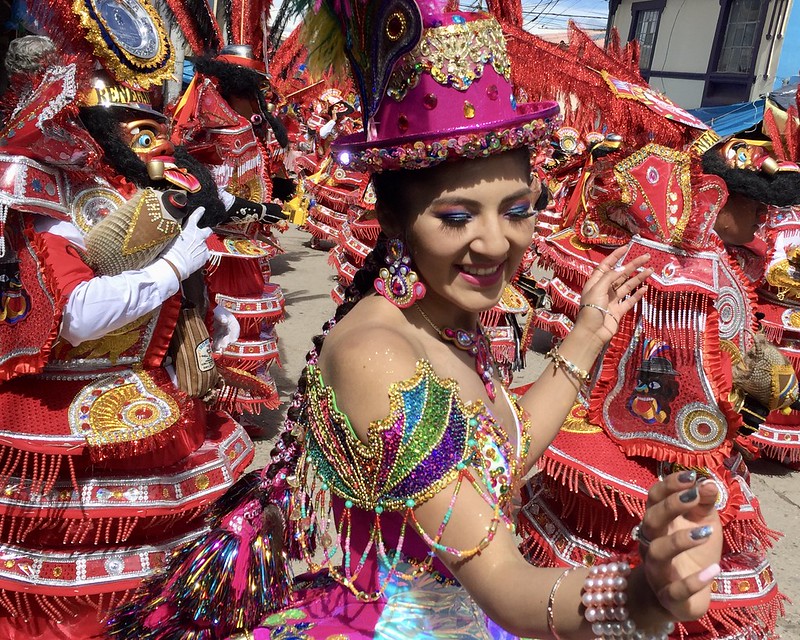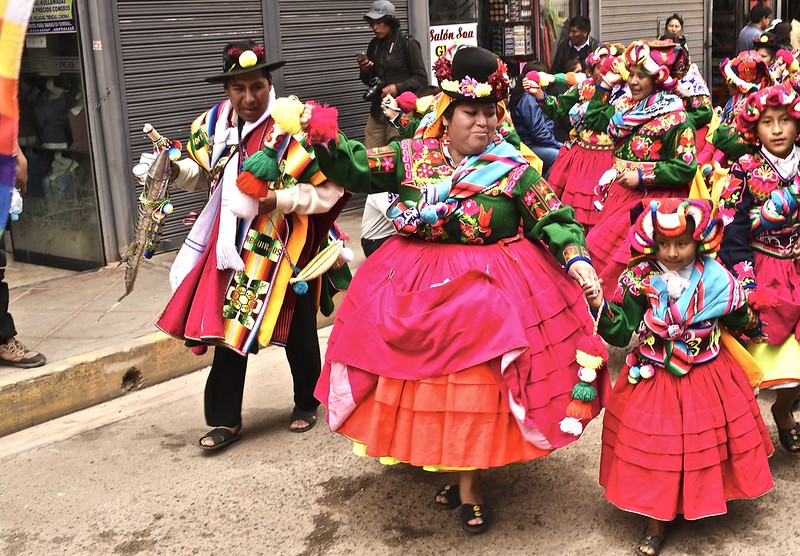Fiesta de la Candelaria(Virgin of Candelaria)
A Grand Dance Festival of Faith and Folklore Echoing on the Shores of Lake Titicaca
2026/01/30 - 2026/02/12
Every February, the town of Puno on the shores of Lake Titicaca in Peru is swept up in the fever of the Fiesta de la Candelaria, one of South America’s most electrifying celebrations. For two weeks, the city becomes a whirlwind of color, sound, and dance—over 40,000 dancers and 9,000 musicians take part in spectacular parades dedicated to the Virgin of Candelaria, blending Catholic faith with Andean traditions. If you want to experience the pulse of live music, dazzling costumes, and the collective excitement of a city united, this is the festival for you.
The Fiesta de la Candelaria is held every year in early February and welcomes everyone—pilgrims, folklore enthusiasts, and travelers from around the world. The power of the Diablada (Dance of the Devils), the sparkle of sequined costumes, and the flavors of Andean street food invite you to experience Peru’s living traditions with all your senses.
Main Attractions
Massive Dance Parades & Competitions
The heart of the festival is the spectacular parade, where more than 40,000 dancers and 9,000 musicians fill the streets of Puno. Traditional regional dances such as the Diablada (Dance of the Devils), Morenada, and Caporales are performed one after another. The roar of brass bands and drums, the steps and spins of the dancers, shake the city’s plazas with overwhelming energy.
Key Events
Highlights include the solemn procession of the Virgin of Candelaria statue on a flower-adorned platform, fireworks over the lake, street parties, and concerts of Andean and contemporary music. The main dance competition is held at Enrique Torres Belón Stadium, where dazzling costumes and performances captivate both the audience and judges.
Costumes and Decorations
Dancers appear in elaborate costumes: devil masks and horns, glittering capes, embroidered skirts, and boots with bells. Women’s polleras (layered skirts) swirl in a riot of color, and men’s jackets and hats are decorated with sequins and beads. The city is adorned with banners, flowers, and candles, while the scent of incense and freshly baked bread drifts on the highland breeze.
Traditional Food & Drink
Food stalls serve Andean specialties such as anticuchos (grilled beef heart skewers), papa rellena (stuffed potatoes), chicharrón (fried pork), and buñuelos (fried sweets). Warm drinks like api (spiced purple corn drink) and coca tea are perfect for warding off the chill of the Andean night. The hearty, rustic flavors help revive tired dancers and festival-goers alike.
Cultural and Historical Background
The origins of the Fiesta de la Candelaria date back to the 16th century, when Spanish missionaries introduced the veneration of the Virgin Mary to the Andean highlands. Over time, Catholic rituals blended with indigenous celebrations honoring Pachamama (Mother Earth) and prayers for fertility, creating a unique festival culture. The statue of the Virgin of Candelaria became the patron saint of Puno, revered as a bringer of blessings to the lake and land.
For the people of Puno, this festival is a special time that embodies faith, identity, and community bonds. Families and friends gather, competing in dance and music, turning the entire city into a stage for Peruvian culture. In 2014, the Fiesta de la Candelaria was inscribed as a UNESCO Intangible Cultural Heritage, establishing it as one of the nation’s most important traditional events.
Participant Voices
Coming all the way from Lima to see the Fiesta de la Candelaria was absolutely worth it. When I spoke with a group of Caporales dancers, they told me their costumes are handmade by their whole families. I’ll never forget the pride shining in their eyes.
Fun Facts
- The Virgin of Candelaria statue receives a new gown every year, sometimes embroidered with gold and silver thread.
- Puno is known as “the Folklore Capital of Peru” thanks to this festival.
Festival Dates
The Fiesta de la Candelaria is held every year in early February at various locations in Puno, Peru. For the latest information, check with the Puno Tourism Board or the official website.
The event schedule is subject to change. Please check the official website for the most up-to-date information.
Media

photo by vincenzooli

photo by vincenzooli

photo by Jose A Aponte

photo by vincenzooli

photo by vincenzooli
Information
| Name | Fiesta de la Candelaria(Virgin of Candelaria) |
| Country | Peru |
| Area | Puno, Copacabana, Lake Titicaca |
| Date | 2026/01/30 - 2026/02/12 |
| Link |
Upcoming Festivals
Dia de la Virgen de Guadalupe Mexico
A Festival Weaving Faith, Fervor, and Mexican Identity
2025/12/11L'Escalade Switzerland
Geneva’s Grand Winter Festival of Courage, Chocolate, and Community
2025/12/12Umkhosi Wokweshwama South Africa
The Zulu First Fruits Festival—A Sacred Celebration of Land, Ancestors, and Renewal
2025/12/12Lucia Festival (St. Lucia's Day) Sweden
A Festival of Light Illuminating the Nordic Darkness
2025/12/15Las Posadas Mexico
The Luminous Quest for Sacred Shelter
2025/12/22Noche de Rabanos (Night of the Radishes) Mexico
A celebration blending art, farming heritage, and cultural traditions
2025/12/23Chant of the Sybil on Majorca Spain
A Medieval Prophecy Echoes Through Majorcan Christmas
2025/12/23‘Hatajo de Negritos’ and the ‘Hatajo de Pallitas’ Peru
A Christmas Festival of Rhythm, Faith, and Afro-Andean Heritage in Peru’s Ica Region
2025/12/24Harbin International Ice and Snow Sculpture Festival China
A Frozen Wonderland Where Art and Adventure Merge
2025/12/24Takanakuy Peru
The Andean Festival of Reconciliation by Fist—How Confrontation Creates Year-End Peace and Bonds